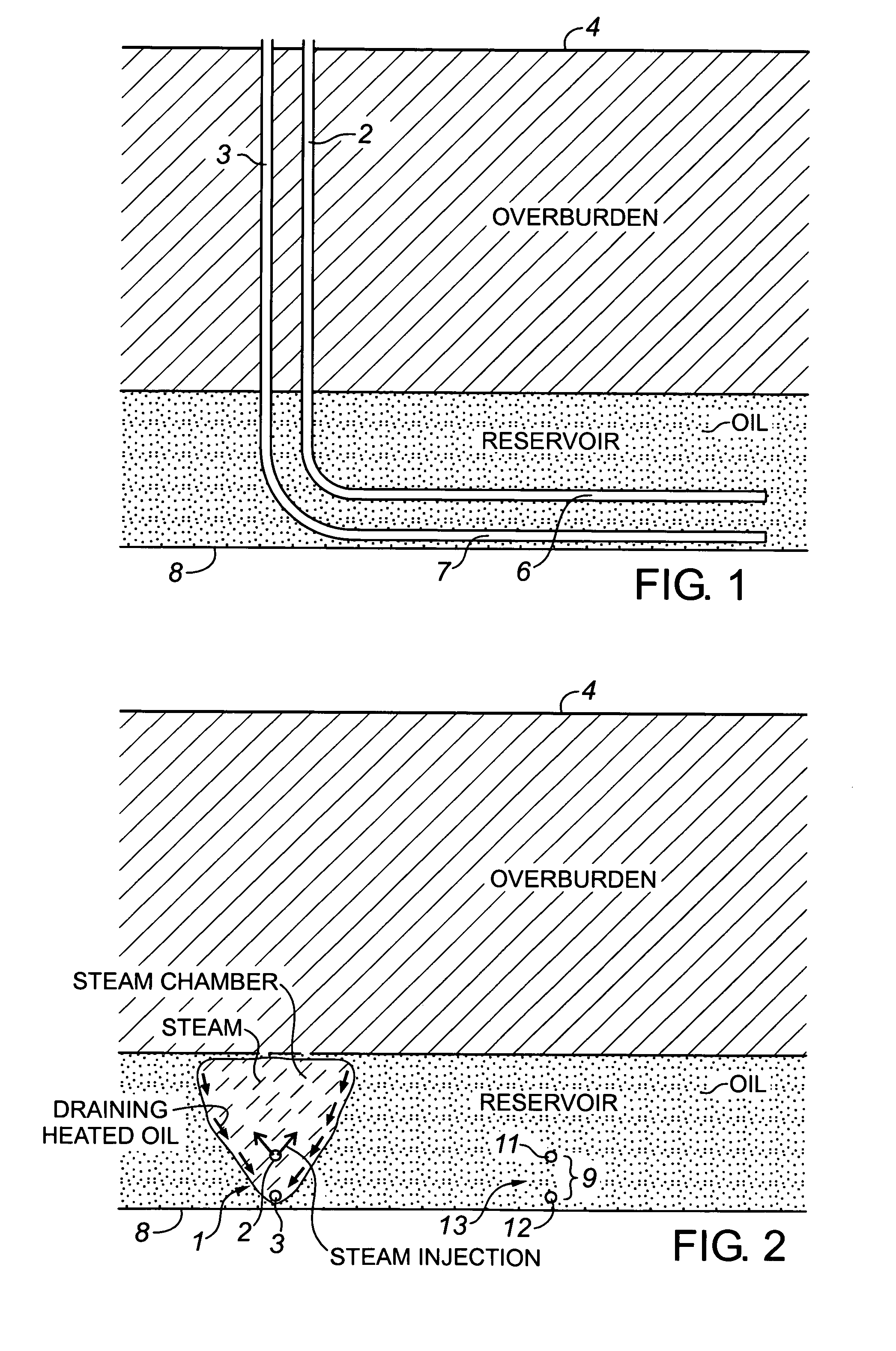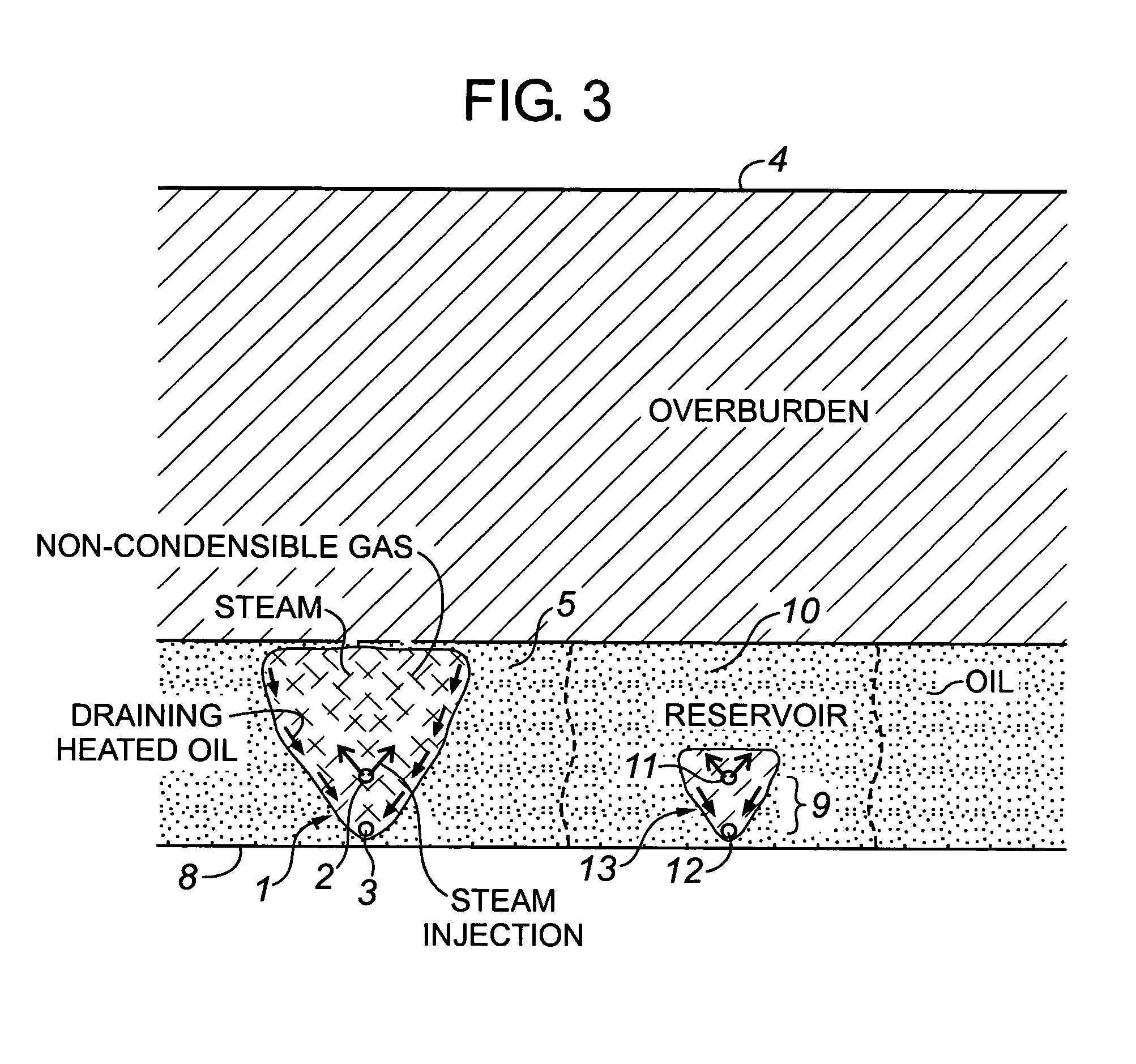Process for sequentially applying SAGD to adjacent sections of a petroleum reservoir
a petroleum reservoir and sequential application technology, applied in the field of recovery of heavy oil, can solve the problems of dropping oil production rate and becoming uneconomic to justify continuing to produce the first section, and achieve the effect of improving production
- Summary
- Abstract
- Description
- Claims
- Application Information
AI Technical Summary
Benefits of technology
Problems solved by technology
Method used
Image
Examples
Embodiment Construction
[0024]In accordance with one embodiment of the process, it comprises:[0025](a) directionally drilling one or more deviated first pairs 1 of upper injection and lower production wells 2,3 from ground surface 4 into a reservoir first section 5, to provide generally parallel, co-extensive, vertically spaced apart, horizontal well portions 6,7 extending through the section adjacent its base 8, and completing the wells 2,3 for SAGD production;[0026](b) establishing fluid communication between the injection and production wells 2,3 of each first pair, for example by circulating steam through both wells, to heat the span 9 between the wells by heat conduction, and then displacing and draining the oil in the span 9 by injecting steam through the upper injection well 2 and opening the lower production well 3 for production;[0027](c) practising SAGD in the reservoir first section 5 by injecting steam through the injection wells 2 and producing the produced heated oil and condensed water throu...
PUM
 Login to View More
Login to View More Abstract
Description
Claims
Application Information
 Login to View More
Login to View More - R&D
- Intellectual Property
- Life Sciences
- Materials
- Tech Scout
- Unparalleled Data Quality
- Higher Quality Content
- 60% Fewer Hallucinations
Browse by: Latest US Patents, China's latest patents, Technical Efficacy Thesaurus, Application Domain, Technology Topic, Popular Technical Reports.
© 2025 PatSnap. All rights reserved.Legal|Privacy policy|Modern Slavery Act Transparency Statement|Sitemap|About US| Contact US: help@patsnap.com



